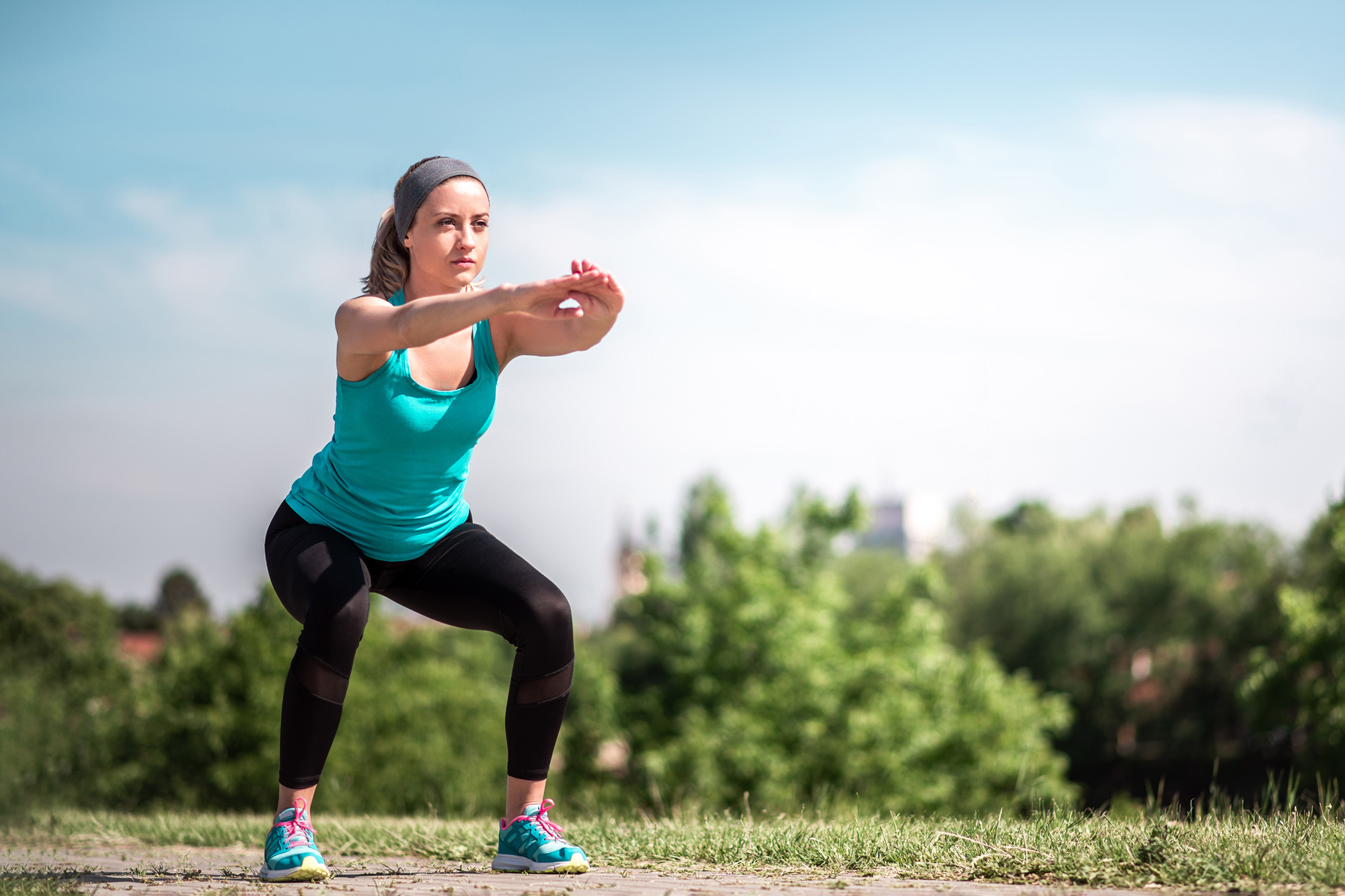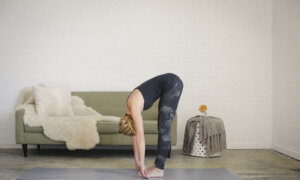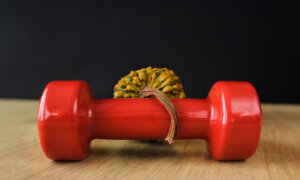Modern socialization and work patterns among younger generations often involve long periods of sitting and inactivity. Extended inactivity and poor posture can lead to significant weakness and loss of endurance at any age. I see this in my own family.
My daughter Meagan Shelley, a 26-year-old full-time freelance writer, finds herself up against a constant deluge of deadlines and new opportunities, which almost always require long periods of sitting. She and many others with similar demands may demonstrate postural problems earlier than the average population.
By your mid-to-late 30s, two decades of poor habits can result in serious issues such as upper crossed syndrome, kyphosis, back and neck pain, and even rotator cuff tears.
Never fear, though. You are still young and energetic, and tackling postural and strength issues early can set you on the path to better health now and establish healthy habits for the future.
These everyday exercises—high-intensity interval training, strength training, and flexibility exercises—are great for your 30s. To make them more enjoyable and ensure better participation, gather a group of friends and do them together regularly. The goal is to enhance muscle mass, maintain cardiovascular health, and build a strong foundation for future decades.
Although you’re still young, discussing your exercise and health plans with your medical practitioner is always a good idea.
6 Targeted Exercises for Your 30s
1. Body Weight Squat
The body weight squat is a classic movement that foregoes weights but is a fantastic all-around quadriceps exercise. I love it because it strengthens the muscles that help you stand up, jump, climb stairs, and run. Strong quadriceps can eliminate the feeling of weakness when standing up.
Step 1: Stand on a stable surface with your feet shoulder-width apart. Reach your arms straight out in front of you before initiating the squatting movements to maximize your balance.
Step 2: Slowly move into a squatting position over 2 to 3 seconds until your knees reach a 90-degree angle. Keep your back straight and your head up.
Step 3: Slowly return to standing. Avoid springing up, and control your movements.
Step 4: This counts as 1 repetition. Try to perform 3 sets of 15 repetitions.
Modification: If you can’t squat to 90 degrees, go as low as you can. You’ll be able to go lower as you become stronger.

Body Weight Squat (Dan Skorbach/The Epoch Times)
2. Glute Bridges
Glute bridges strengthen your pelvis and increase hip stability. They can also reduce pain associated with
pelvic instability, a growing issue among younger age groups.
Though highly effective, this movement can be challenging. To maximize the benefits, focus on maintaining proper form.
Be sure not to skip the 2-second hold at the top—this is where your muscles engage the most—and you gain the greatest benefit.
Step 1: Lie on a firm, supportive surface.
Step 2: Bend your knees and place your feet flat on the surface. Keep your hands by your sides, palms facing down.
Step 3: Raise your hips off the floor until your trunk is straight, taking 1 second to complete the movement. Use your arms for stability, avoiding sagging or arching. Hold for 2 seconds, then lower back down. Immediately arise without resting.
Step 4: Complete 10 repetitions per set, aiming for 3 sets.

Glute Bridge (Dan Skorbach/The Epoch Times)
3. Mountain Climbers
The mountain climber exercise targets both your core muscles and cardiovascular system. It is a simple movement that provides many benefits and is an efficient way to improve strength and endurance.
Step 1: Start in a pushup position with your feet shoulder-width apart, hands on the floor, and elbows fully extended. Keep your back straight without sagging or bowing.
Step 2: Lift a foot, slowly bend your knee, and bring it to your chest while keeping your body still. Slowly lower your leg back down and repeat with the other leg. Move one leg at a time or both at the same time—moving both resembles a fast, running motion.
Step 3: This counts as 1 repetition. Try to perform 3 sets of 15 repetitions, resting 1 minute between sets. Adjust sets and repetitions based on your tolerance level.
Modifications: You can modify this exercise by holding onto a counter (easiest), performing it from a seated surface (intermediate), or doing it on the floor (most challenging).

Mountain Climbers (Dan Skorbach/The Epoch Times)
4. Lunges
Lunges are great for developing balance and stability. They strengthen your back, hips, and legs by engaging the large muscles of the lower body including your glutes, hamstrings, and quadriceps.
Step 1: Stand with your feet shoulder-width apart.
Step 2: Step about 2 feet forward with your right leg, keeping your foot flat on the floor. Your left heel will lift slightly off the floor.
Step 3: Keep your core tight and bend your right knee to a 90-degree angle while also bending your left knee toward the floor. Push back up to standing and return to the starting position.
Step 4: This counts as 1 repetition. Perform 12 repetitions with the right leg, then repeat with the left leg. Try to complete 3 sets with each leg.
Modification: If you can’t squat to 90 degrees due to weakness or knee pain, go as low as you can. Over time, you’ll be able to do more.

Lunges (Dan Skorbach/The Epoch Times)
5. Pushups
Pushups are a classic bodyweight exercise known for delivering an effective workout with a straightforward movement. They are particularly excellent for building core strength.
Step 1: Begin on the floor with your feet together, palms on the floor, and elbows extended.
Step 2: Lower yourself by bending your elbows while keeping your back and legs straight.
Step 3: Push yourself back up to the starting position. This counts as 1 repetition. Aim for 3 sets of 10 repetitions, modifying as needed.
Modification: For an easier variation, keep your knees on the floor and bend your arms only as much as you can comfortably manage.

Push-Ups (Dan Skorbach/The Epoch Times)
6. Chair Dips
Chair dips target your arms and shoulders while also strengthening your core.
Step 1: Sit at the edge of your chair, extend your feet out in front, and place your hands palms down on the seat.
Step 2: Slide off the chair, and slowly lower yourself toward the floor, using your arms for support. Push back up once you reach the lowest point.
Step 3: This counts as 1 repetition. Aim for at least 12 repetitions, taking 1 second to move in each direction. Try to do 3 sets.
Modification: Adjust your foot positioning to control the level of difficulty. You can also limit your range of motion, descending only as far as your ability allows.

(Dan Skorbach/The Epoch Times)




















